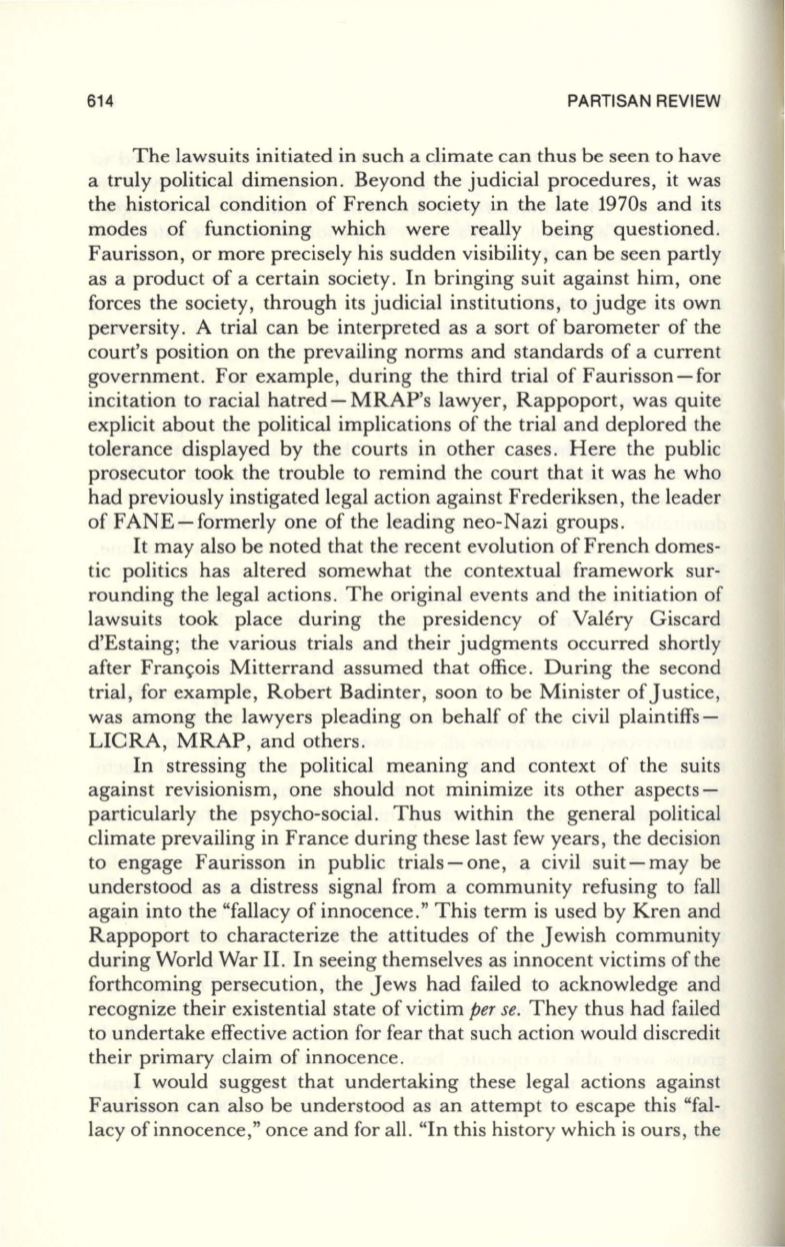
614
PARTISAN REVIEW
The lawsuits initiated in such a climate can thus be seen to have
a truly political dimension. Beyond the judicial procedures, it was
the historical condition of French society in the late 1970s and its
modes of functioning which were really being questioned.
Faurisson, or more precisely his sudden visibility, can be seen partly
as a product of a certain society. In bringing suit against him, one
forces the society, through its judicial institutions, to judge its own
perversity. A trial can be interpreted as a sort of barometer of the
court's position on the prevailing norms and standards of a current
government. For example, during the third trial of Faurisson - for
incitation to racial hatred-MRAP's lawyer, Rappoport, was quite
explicit about the political implications of the trial and deplored the
tolerance displayed by the courts in other cases. Here the public
prosecutor took the trouble to remind the court that it was he who
had previously instigated legal action against Frederiksen, the leader
of FANE-formerly one of the leading neo-Nazi groups.
It
may also be noted that the recent evolution of French domes–
tic politics has altered somewhat the contextual framework sur–
rounding the legal actions. The original events and the initiation of
lawsuits took place during the presidency of Valery Giscard
d'Estaing; the various trials and their judgments occurred shortly
after Franr;:ois Mitterrand assumed that office. During the second
trial, for example, Robert Badinter, soon to be Minister of Justice,
was among the lawyers pleading on behalf of the civil plaintiffs–
LICRA, MRAP, and others .
In stressing the political meaning and context of the suits
against revisionism, one should not minimize its other aspects–
particularly the psycho-social. Thus within the general political
climate prevailing in France during these last few years , the decision
to engage Faurisson in public trials-one, a civil suit-may be
understood as a distress signal from a community refusing to fall
again into the "fallacy of innocence." This term is used by Kren and
Rappoport to characterize the attitudes of the Jewish community
during World War II. In seeing themselves as innocent victims of the
forthcoming persecution, the Jews had failed to acknowledge and
recognize their existential state of victim
per se.
They thus had failed
to undertake effective action for fear that such action would discredit
their primary claim of innocence .
I would suggest that undertaking these legal actions against
Faurisson can also be understood as an attempt to escape this "fal–
lacy of innocence," once and for all. "In this history which is ours, the


